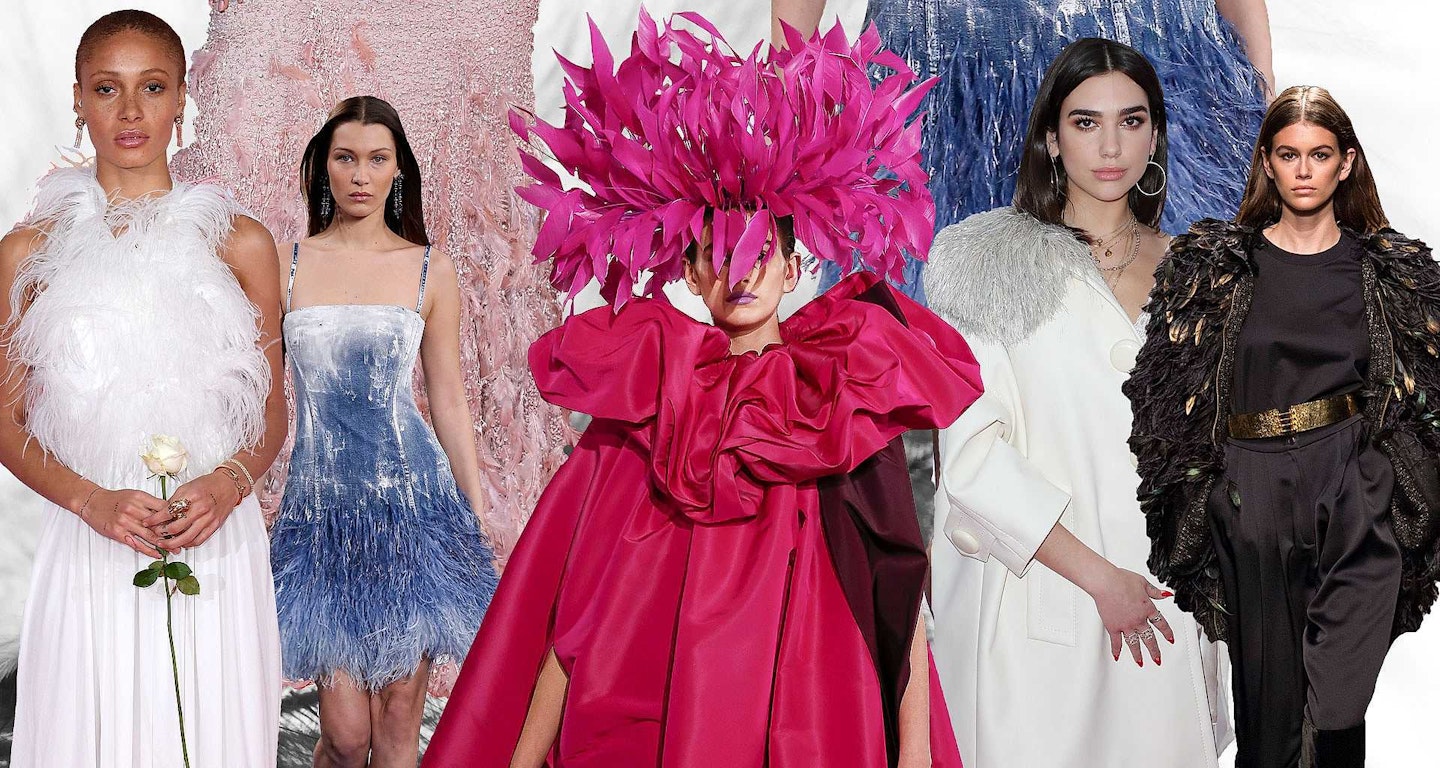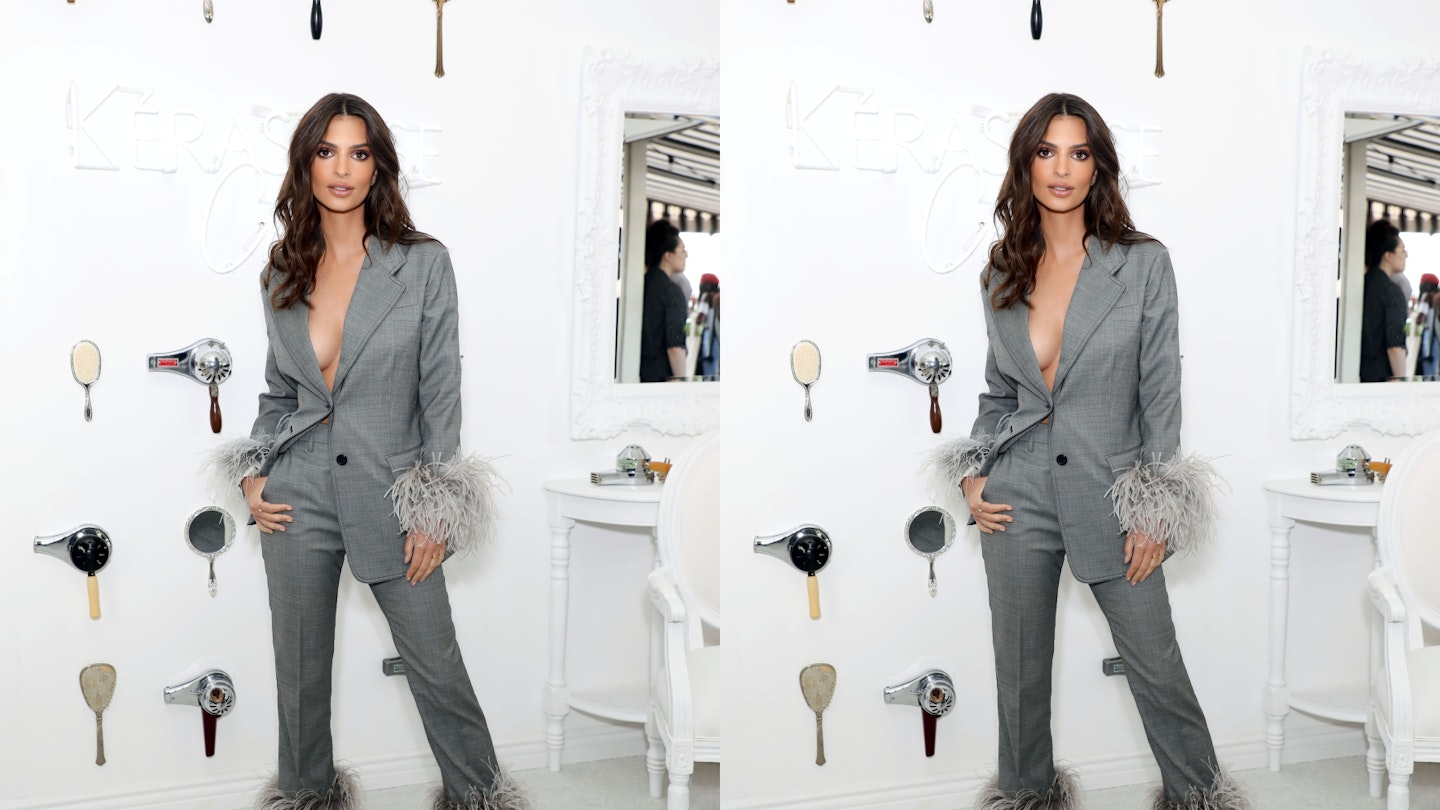Holding a pair of fluffy heels, sex-guru Samantha Jones snorts ‘They're not for you, they're for him’ to the accidentally celibate Carrie Bradshaw. Images of Mae West and Marilyn Monroe, Vegas showgirls and Gloria Swanson come to mind. Buttressed by questions of sexual politics and ethical production, this innocuous trim has risen to the fore as a flirty trend for summer 2018.
When and how did plumage take on this perennial allure? Manet’s busty barmaid in the celebrated ‘A Bar at the Folies-Bergère’ (1882) has a plume of feather’s erupting from her bust line. Kate Moss dressed in a black dress with a trim of feathers falling off her shoulders as she was led away from the paparazzi by her then-boyfriend Johnny Depp has steered the narrative of feathers as a semaphore for sex. Part coquettish, part carnal the feather is a tease, a sartorial seducer sending a siren call of femininity through the ages. There’s scientific proof to the fact. It’s been theorized that brightly coloured birds swell their plumage to attract a mate. Question: is humanity mimicking the natural world? Yet it’s not quite as simple as this. Sure they have sex-appeal (cue a the feather boa reference) but their delicacy and compulsion to show control over the animal kingdom makes them a potent signifier of power too.

The world is a flat circle and fashion is always recycling its references. According to the University of Ferrara in Italy, feathers were first found attached to Neanderthal bones. Later, during the Middle Ages, the well-to-do classes showed their status and rank through this exotic adornment. The allure continued as they were a sign of mobility and individuality that appealed to elite stock through to the naughty nineties (as in the 1890s) when women would wear hats adorned with taxidermied birds. Called the ‘Plume Boom’, this look was so popular that The Smithsonian notes there was a decided drop in bird populations.
Yves Saint Laurent coined the feather as a symbol of sexual liberation by taking it out of the cloud of the Moulin Rouge and placing it in front of editors and buyers. And throughout the 2000s, Alexander McQueen was fascinated with birds, he engineered dresses that took heed to the lines of the weightless creatures. It’s only recently that feathers have been rehabilitated as a seductive trim, in Aztec and Native American culture they’ve been assigned as a symbol of leadership, jacked into headdresses and attached to traditional outfits.
Muccia Prada was the prompt that started the design world to embrace the fabulousness of feathers again. For her spring summer 18 collection she tapped into the fluff of marabou to add a maximalist touch. Saint Laurent’s famed ‘Yeti’ boots did the same and elsewhere Maison Margiela and Alberta Ferretti got in the act. On the red carpet, Angelina Jolie and Alexa Chung have proved themselves affixed to this slippery symbol of sex and power. It’s this subversive combination that Emily Ratajkowski embraced at an event last night. Inching towards the meaning at the core of this semaphore, she wore a suit trimmed with plumage. Sure the adornment upped the glamour quotient it but it also subverted the memo that tailoring sends.
